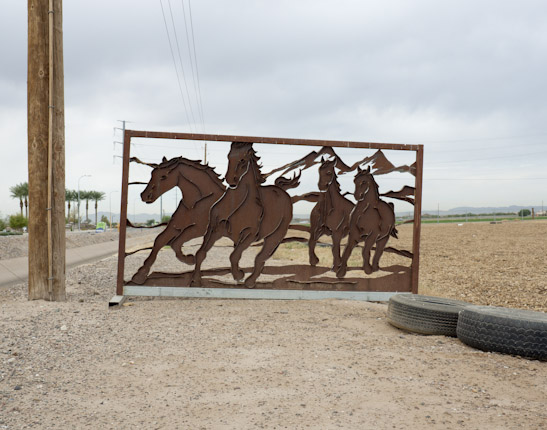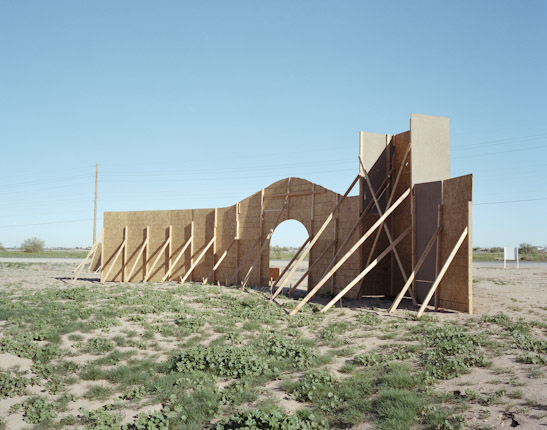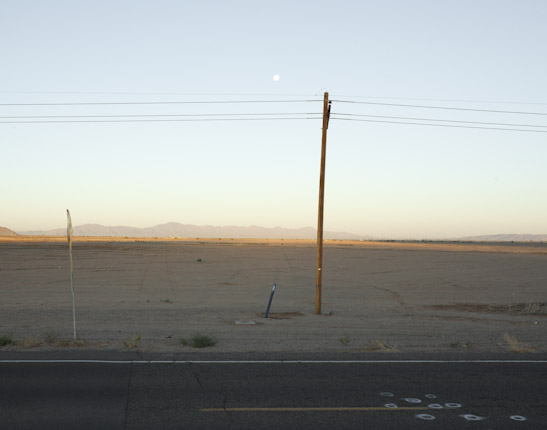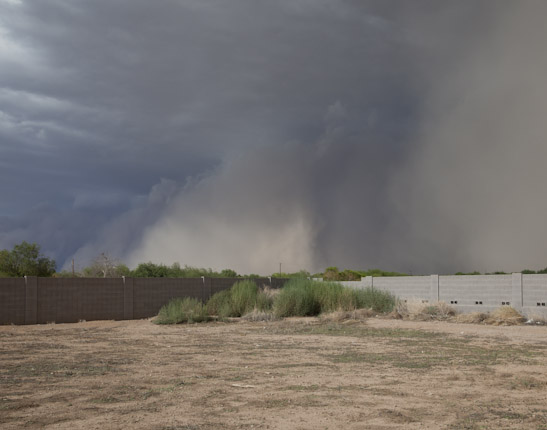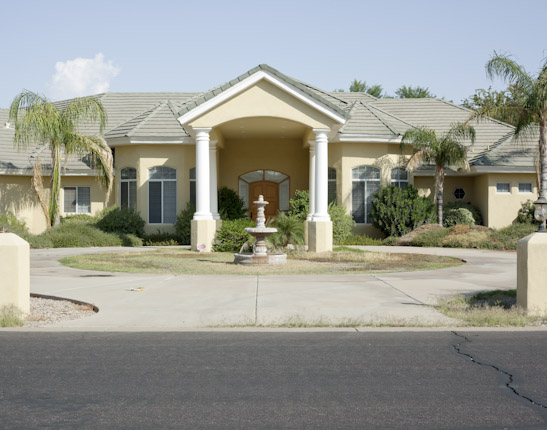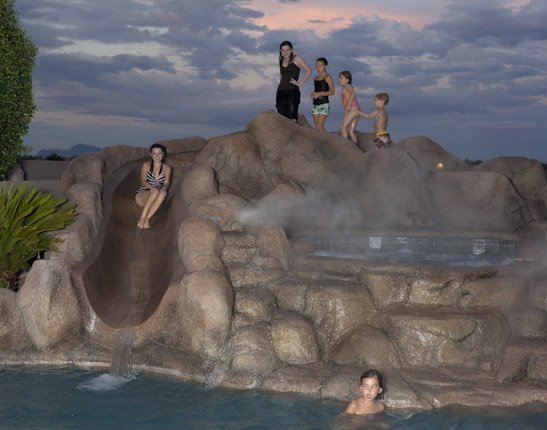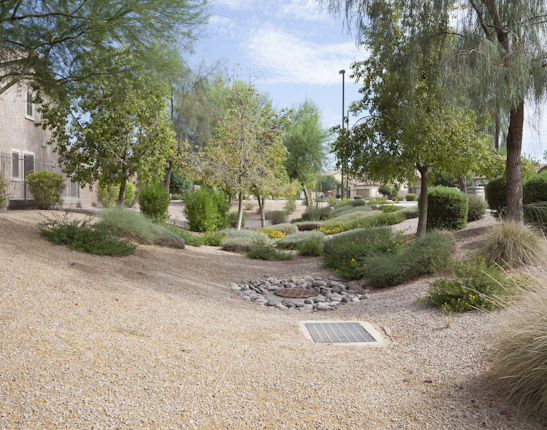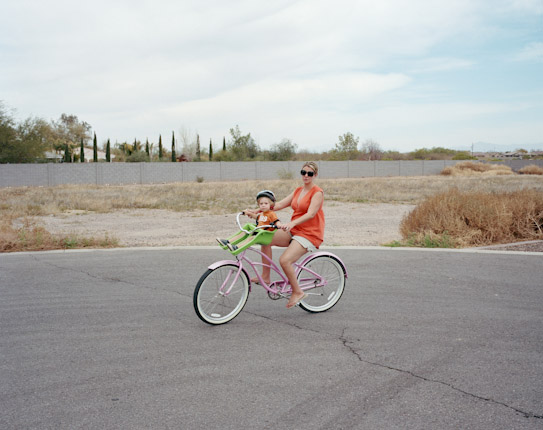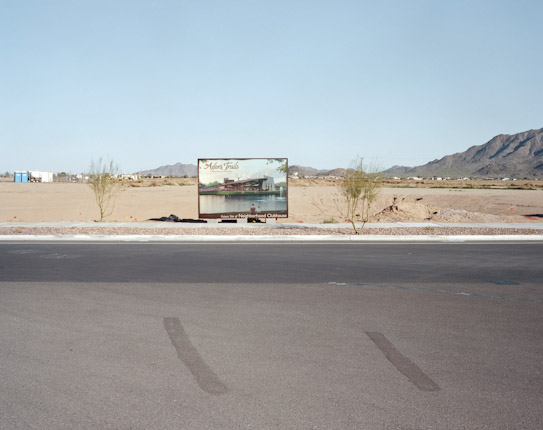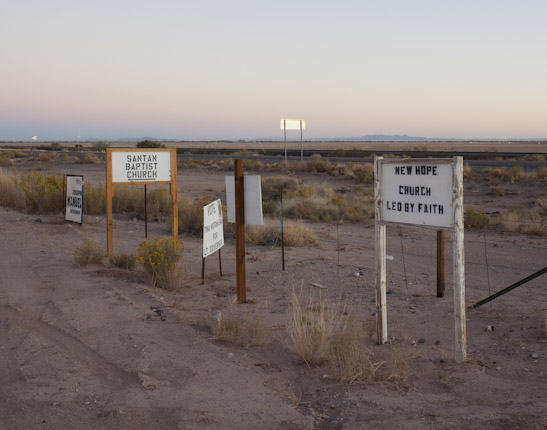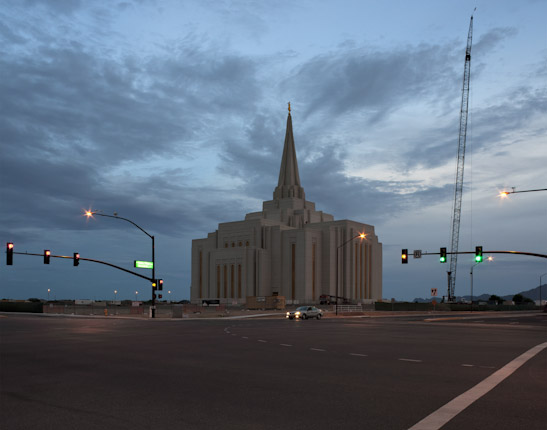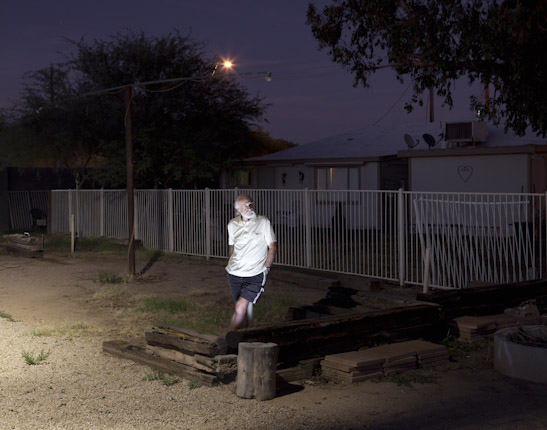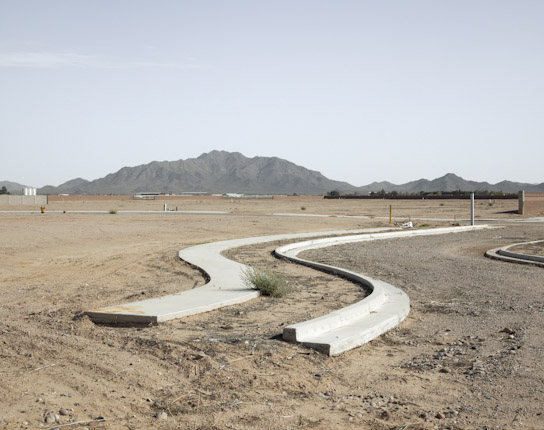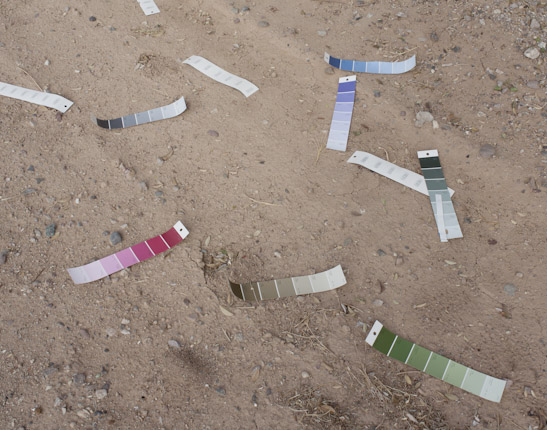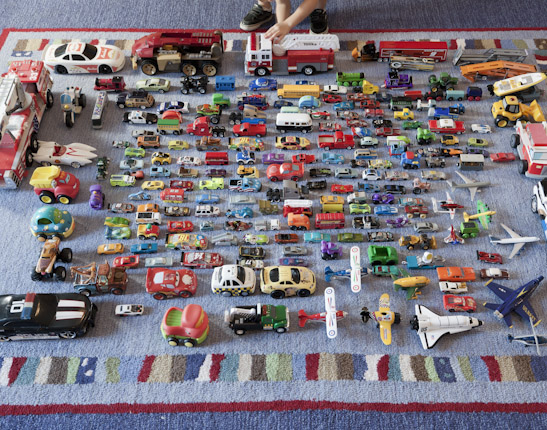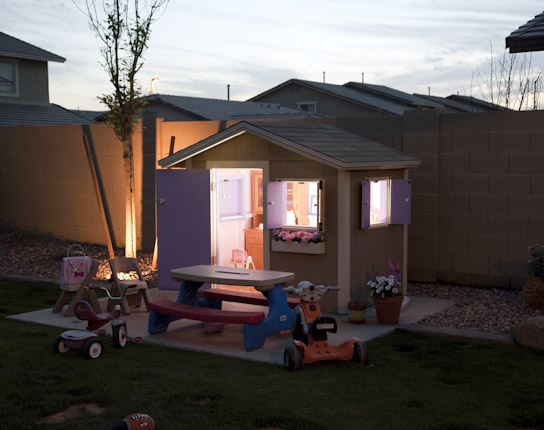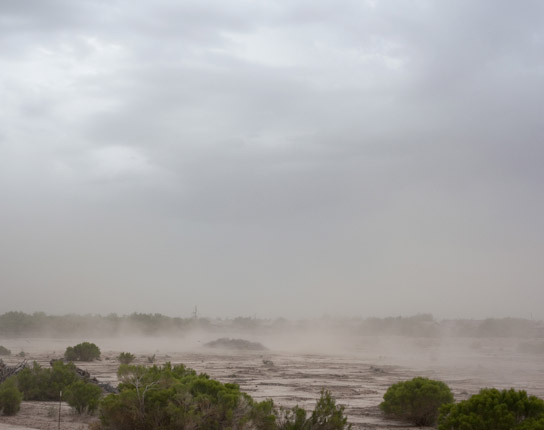“The new frontier in the West is the ever-expanding urban fringe. Haboob is a mesmerizing portrait by Andrew Phelps of a small desert town caught in the crossfire between land speculators and beneficiaries of the growth machine. The result is a pictorial document of civilization and barbarism.“
Andrew Ross, author of Bird on Fire: Lessons from the World’s Least Sustainable City.
HABOOB, 2012.
After spending several years photographing the traces of my family as they have shaped and been shaped by the east valley of Phoenix in Higley, AZ, my work has shown me that though photography is poor at showing the truth, it is even worse at predicting the future.
The utopian vision I once felt in the west, and the buzz of a seemingly bullet-proof real-estate market has given way to a social and economic no-man’s land. What was once thought of as the new American Dream is now a place symbolic for instability, and vulnerability when capitalism goes unchecked. The unbridled expansion, which began in my childhood, was betting its future on the promise of continual growth and sub-prime interest rates. Considered by many to be unsustainable, “progress” in the form of urban sprawl is proving once again to be a facade of a utopian, homogenous vision.
Called by their Arabic name, the East Valley is famous for destructive haboob sandstorms. As Higley’s vision of the new american dream recedes, the haboob is a fitting metaphor, representing the fear and instability that have become so prevalent in the US urban middle class and its identity is once again being reformed, reshaped.
Andrew Phelps, june 2012


